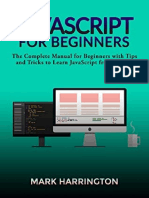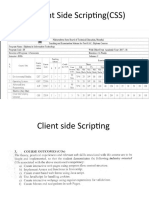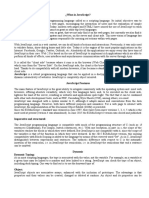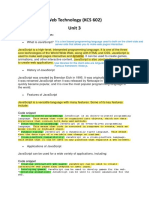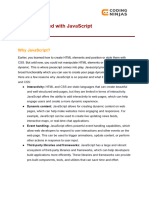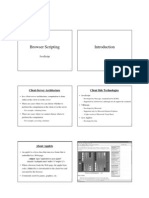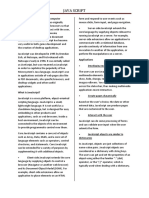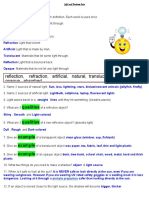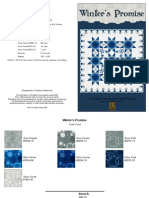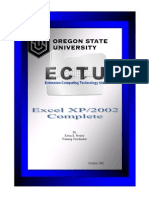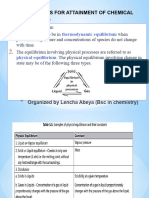0% found this document useful (0 votes)
69 views4 pagesJavascript: Javascript (JS) Is A Lightweight, Interpreted, or
This document provides an overview of the JavaScript programming language. It describes JavaScript as a lightweight, interpreted language that is used in both browser and non-browser environments. The document outlines JavaScript's dynamic capabilities and prototype-based inheritance. It also notes that JavaScript specifications are defined by ECMA International and that the language should not be confused with the Java programming language.
Uploaded by
Nayana SurendranCopyright
© © All Rights Reserved
We take content rights seriously. If you suspect this is your content, claim it here.
Available Formats
Download as DOCX, PDF, TXT or read online on Scribd
0% found this document useful (0 votes)
69 views4 pagesJavascript: Javascript (JS) Is A Lightweight, Interpreted, or
This document provides an overview of the JavaScript programming language. It describes JavaScript as a lightweight, interpreted language that is used in both browser and non-browser environments. The document outlines JavaScript's dynamic capabilities and prototype-based inheritance. It also notes that JavaScript specifications are defined by ECMA International and that the language should not be confused with the Java programming language.
Uploaded by
Nayana SurendranCopyright
© © All Rights Reserved
We take content rights seriously. If you suspect this is your content, claim it here.
Available Formats
Download as DOCX, PDF, TXT or read online on Scribd
/ 4





















